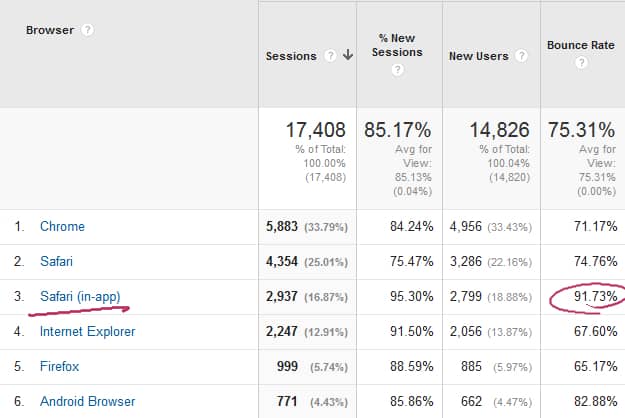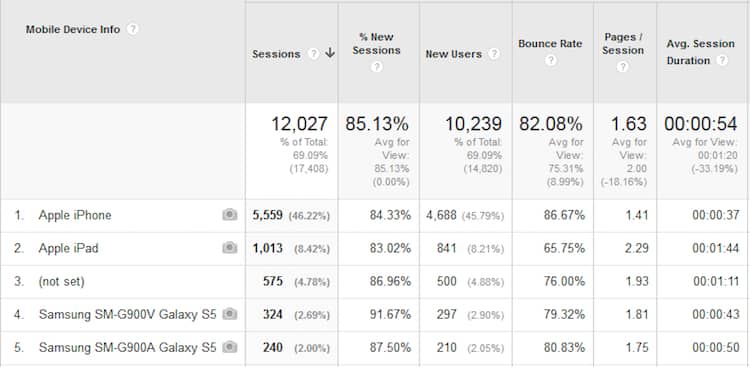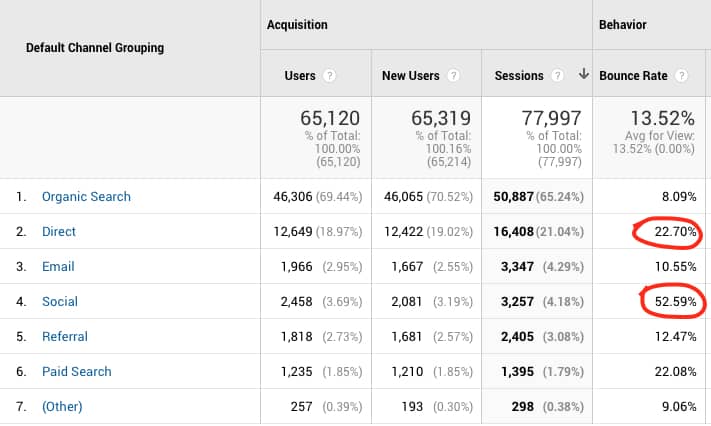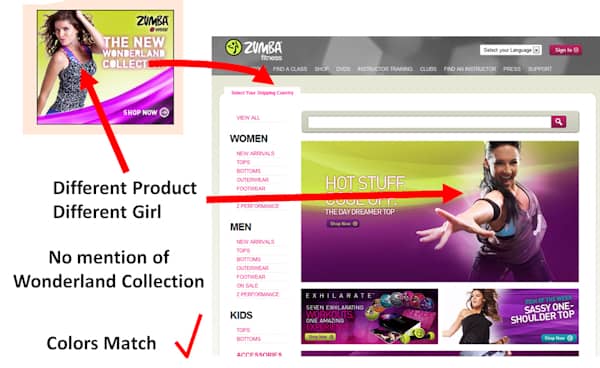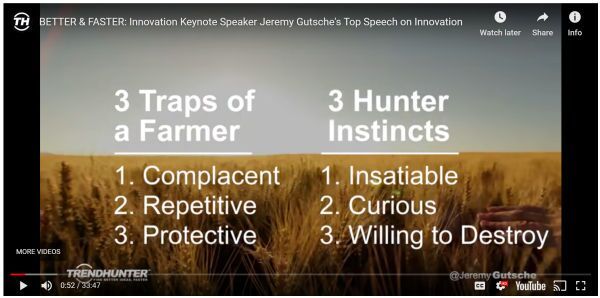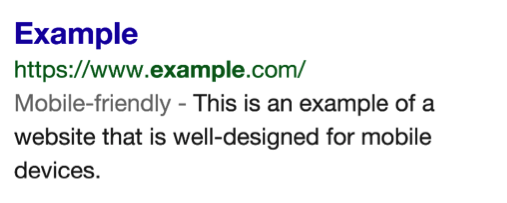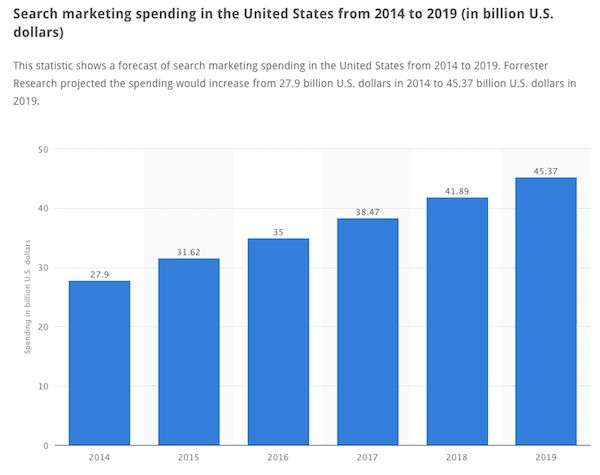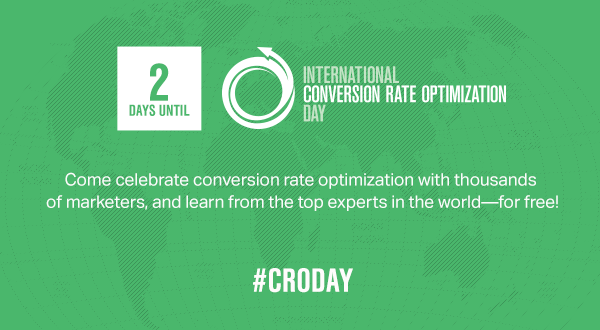Technically, a “bounce” is a visitor that looks at only one page, or a visitor that spends an embarrassingly short time on the page. Keep reading to find out how to reduce bounce rates.
A bounce is any visit for which the visitor only looks at one page and does not interact with it. This sounds truly unfair as someone may spend minutes on your blog post or landing page, and still be counted as a bounce.
A visitor bounces when they don’t find anything close to what they were looking for when they visit your site. Either you’re attracting the wrong visitors or you don’t know why they are visiting.
Bounce is the most extreme form of conversion problem. High bounce rates are an indication that you are throwing good marketing dollars down the tubes. Whatever you’re spending to get traffic to your site is being wasted.
How to Reduce Bounce Rates or the heartbreak of “bounce”
Boing!
That’s the sound of someone finding your site, but not finding what they wanted ON your site.
Boing!
That’s the sound of website content that doesn’t match your marketing.
Boing!
That’s the sound of a website that talks about the company instead of the visitors’ problems.
What are some strategies to reduce bounce rate?
This is a common question, and requires an understanding of the definitions of bounce rate.
The bounce rate is a bit slippery and requires some examination. The intention of measuring the bounce rate is to figure out how many of your visitors are leaving almost immediately after arriving at your site. This metric provides for a lot of error in interpretation.
“A high bounce rate means your site is crappy.”
This is rarely the case. A more accurate explanation is that your site doesn’t look the way your visitors expect it to look. Understanding what your visitors expect is the way to reduce bounce rates.
Instead, there are usually some more valid reasons for your high bounce rate. Here are the things digital marketing and conversion experts examine when confronted with uncomfortably high bounce rates.
1. You’re measuring it wrong
How you measure your bounce rate can give you very different insights. For example, blogs often have high bounce rates. Does this mean that visitors don’t like the blog?
Many analytics packages measure a bounce as a visit, or session, that includes only one page on your site. Visitors who take the time to read an entire article would be considered a “bounce” if they then left, even though they are clearly engaged.
We set a timer for our blog traffic, so that any visitor who sticks around for 15 seconds or more is not considered a bounce. You can set a timer to the amount of time you consider appropriate.
2. How to Reduce Bounce Rates: Diagnose Technical Difficulties
We are fond of saying that you don’t have one website, you have ten or twenty or thirty. Each device, each browser, each screen-size delivers a different experience to the visitor. If your website is broken on one of the devices popular with your visitors, you will see a bump in overall bounce rate.
If your pages load slowly, especially on mobile devices, you can expect a higher bounce rate.
Broken internal links and 404 pages are also cause for bounce.
If your page breaks out in a chorus of Also Sprach Zarathustra when the page loads, you may enjoy a higher bounce rate.
How to diagnose device-related technical problems
Your analytics package will track the kind of device your visitors are coming on.
The Google Analytics report Audience > Technology > Browser & OS shows that there may be a technical issue with Safari visitors coming from within an app. This may also reflect visitors coming from mobile ads, and they may simply be lower quality. See below.
With Google Analytics Audience > Mobile > Devices report, we see mobile devices specifically. The Apple iPhone has an above-average bounce rate, and we should probably do some testing there, especially since it’s the bulk of our mobile traffic.
3. Good Traffic Quality Helps Reduce Bounce Rates
If you are getting the wrong visitors, you will have a high bounce rate.
Remember StumbleUpon? Getting your site featured on the internet discovery site often meant a flood of new visitors to your site… and a crash in your conversion rate. Stumble traffic was not qualified, they were just curious.
Your bounce rate is a great measure of the quality of your traffic. Low quality traffic bounces because:
- The search engine showed them the wrong link or a broken link. Do you know how many visitors used to come to our site looking for a “conversion rate” for Russian Rubles to Malaysian Ringletts?!
- User intent. The visitors aren’t ready to buy. They were in a different part of the purchase process. Visitors coming from Social Media ads have notoriously low conversion rates. They weren’t looking, they were just surfing your product pages.
We take a closer look at the source of traffic to diagnose a traffic quality problem using Google Analytics Acquisition > All Traffic > Channels report.
Here we can see that traffic coming from social media and those visitors coming “Direct-ly” have a high bounce rate.
If you are driving a lot of visitors to your home page, you may want to consider presenting them with links to more relevant content. As Tim Ash says, “The job of the home page is to get people off of the home page.” He didn’t mean by bouncing.
With regard to social media, we may have a problem with broken promises.
4. Broken Promises Lead to Conversion Problems
Do your entry pages consider the source of visits?
If your traffic is clicking on an ad that promises 20% off on a specific propane grill, and they’re directed to your home page, you’ve broken a promise.
You might think that they will search your site for the deal. You might even think they’ll search your home page for the deal. You’re wrong. Many will jump.
Every ad, every email invitation, every referral link is a promise you make to your visitor. If they don’t come to a page that lives up to the promise, they are likely to bounce.
- Does the headline on the page match the offer in the ad?
- Does the product in the email appear after the click?
- Are your calls to action in alignment with the landing page?
- Are the colors and design consistent across media?
Looking at your ads on a page-by-page basis is necessary to diagnose and correct this kind of bounce rate problem.
5. Vague Value Propositions don’t help reduce bounce rates
Ultimately, if you’re not communicating your value proposition to your visitors clearly, you are going to enjoy a monstrous bounce rate.
Your value proposition typically does not address your company or your products. It should be targeted at your visitor, why they are there, and why they should stick around.
Each page has its own value proposition. Your business may have a powerful value proposition, but each page should stand on its own.
A contact page should talk about what will happen after you complete the form. Who will contact you? How long will it take? Will they try to sell you something?
A landing page should clearly state that you are in the right place and provide reasons for you to stay and read on.

This landing page delivered a strong value proposition in above the fold. See the full case study and video.
A home page should help you find your way into the site. Most home pages are treated like highway billboards. No wonder people just drive on by.
6. Finally, Is Your Stubborn Bounce Rate Mocking You? [AUDIO]
Most of us, at one time or another, have not only been frustrated with our bounce rate, but completely puzzled about what to do about it.
In this podcast, I will guide you toward a more accurate bounce rate. I will walk you through the steps to use The Timer Listener to time the visit duration of each of your visitors and get those percentages down where they belong.
Ultimately, we don’t want to reduce our bounce rate. We want to improve our conversion rate by bringing the right traffic, to the right page, with the right message, and avoid technical issues that get in the way.
Richard Strauss: Also Sprach Zarathustra by Kevin MacLeod is licensed under a Creative Commons Attribution License.
Brian Massey Marketing Land article, Using A Google Tag Manager Listener To Get Your Real Bounce Rate


